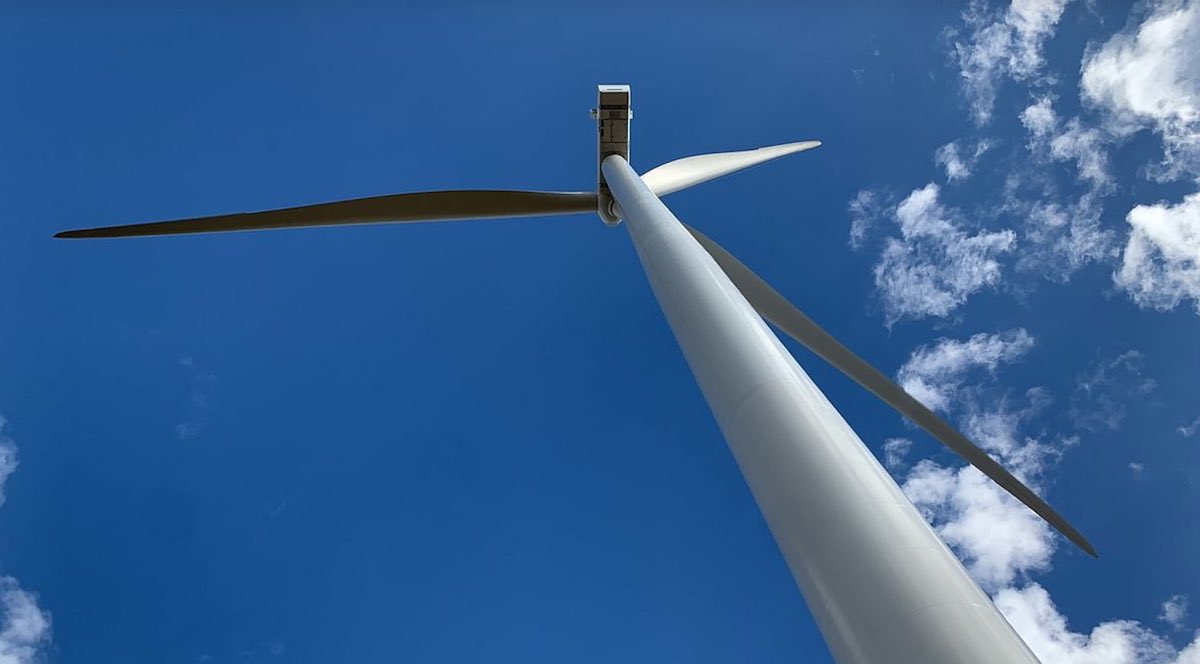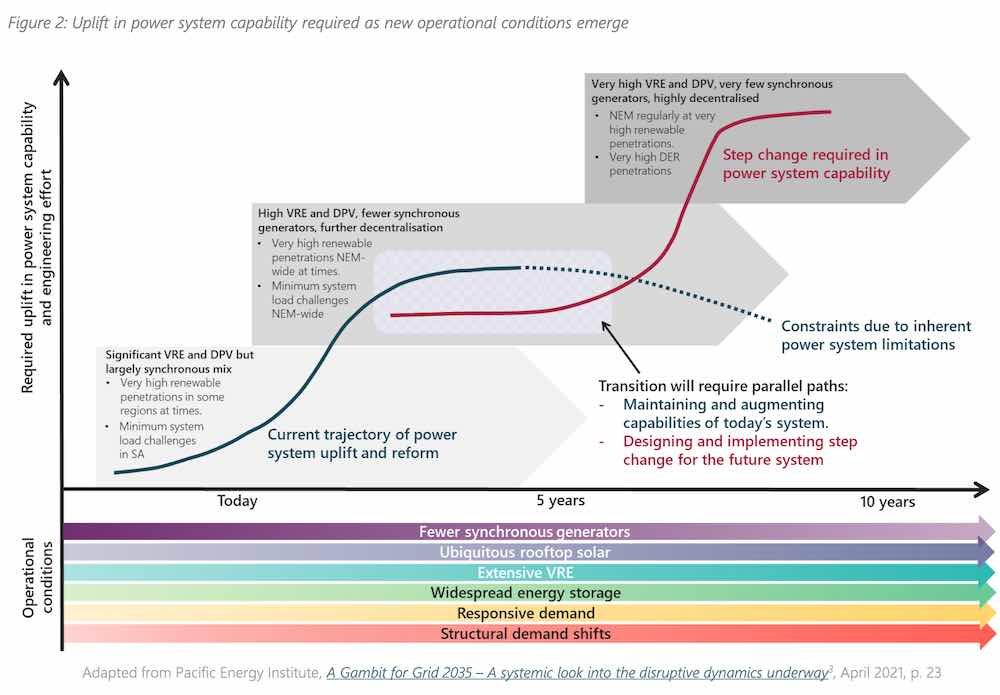The body at the wheel of Australia’s national grid as it hurtles towards “uncharted operational conditions” on the fast-track to 100% renewables has released its to-do list – and it’s a long one, with a big stamp marked “urgent.”
The Australian Energy Market Operator’s new CEO Daniel Westerman made a splash earlier this year when he predicted that the pace of transition in the main grid was so quick that by 2025 there could be instances of 100 per cent renewables, and AEMO needed to be ready for that.
Westerman also later said that AEMO did not yet know the best path to accommodate those periods of 100 pct renewables and it has now released Engineering Framework Initial Roadmap that lays out the technical requirements and strategic design decisions needed to get there.
The focus of the framework is the operational conditions expected to emerge for the National Electricity Market in the next five to 10 years, which could be some of the bumpiest according to the pace of the Step Change scenario detailed in the last AEMO’s 20-year Integrated System Plan.
As the document itself puts it, “the Engineering Framework supports AEMO’s near-term reporting on the supply outlook of system needs, and maps a pathway towards the ISP scenario outcomes by focusing on the work required throughout the next 10 years of the energy transition.”
Under the Step Change scenario, AEMO charts one of the world’s fastest transitions away from fossil fuels to a mix of mostly wind, solar and storage that delivers a renewables share of 94 per cent by 2040.
But the updated ISP – to be released later this week – is expected to outline an even more rapid transition, reaching zero carbon by the mid 2030s, but its biggest challenge is getting ready for periods of “instant” 100 per cent renewables in coming years.
As RenewEconomy has noted before, the challenge comes not in building all that new renewable energy generation capacity, but in making sure the right rules, technologies, market mechanisms and infrastructure supports are in place to accommodate it – and fast.
“The NEM is undergoing profound transformation of an unprecedented scale and pace,” the new AEMO report says. “It will rapidly cross uncharted operational conditions yet to be experienced here or in comparable power systems internationally.”
In real terms, this means that instantaneous penetration of renewables – which has already hit highs of more than 60 per cent over the past month – could reach up to 100% at times by 2025, and on a much more regular basis by 2030.
“Urgent and extensive industry collaboration and effort is needed to engineer the power system to meet these new conditions in a timely and orderly manner, with positive consumer outcomes at the heart of all decision-making.”
In this sense, the Initial Roadmap is a “call to action” for industry, government, and market bodies, that lays out the urgent strategic decisions needed to determine the best approach to the transition, and points out the potential potholes along the road that could slow progress – or worse.
“These potential gaps represent the steps that may be necessary to securely and efficiently ‘bridge the gap’ between today and future operating conditions,” AEMO says. “If the potential gaps are not actioned, the energy transition could be inhibited or constrained.”

The sheer number of these “potholes” is mind-boggling – the Initial Roadmap counts more than 300 individual potential gaps, although that number was whittled down from a previous list of more than 500 that AEMO says was originally identified in consultation with stakeholders.
To make the task of plugging these gaps more palatable, AEMO has grouped them into three major focus areas, dubbed Attributes, Operabilitiy and Integration, which range from the basics of keeping the power system running to the roll-out of new and existing technologies.
Among some of the more urgent tasks identified by the Initial Roadmap include the need to support increasingly complex dynamics as the grid shifts from mainly synchronous to inverter-based resources, such as big batteries.
Another priority focus in the near-term is to enable increasingly decentralised generation via Australia’s three-million-and-counting rooftop solar systems and other distributed energy resources (DER) – something that AEMO has already started to address in some parts of the NEM.
AEMO says that the critical next stage of the Engineering Framework, will require stakeholders to prioritise potential gaps and actions, and align them to organisational efforts. And for this it will hold targeted discussion sessions starting in Q1 2022.
In comments welcoming the release of the Roadmap, the Clean Energy Council said on Wednesday that it looked forward to collaborating with AEMO and industry stakeholders to support the safe and fast decarbonisation of the NEM.
In separate comments on LinkedIn, the CEC’s director of energy transformation, Christiaan Zuur, said the magnitude of the transition underway was remarkable and urged key market bodies beyond the AEMO to lift their game.
“[AEMO’s new report] highlights the need to properly plan for managing a power system that looks completely different,” Zuur wrote.
“We really, really need to see some concrete changes in the regulatory frameworks to unlock the capabilities of renewables. AEMO has a role to play here, but they can’t do it alone. The ESB and AEMC must reassess their priorities for reform, in light of the urgency of enabling the transition.”












